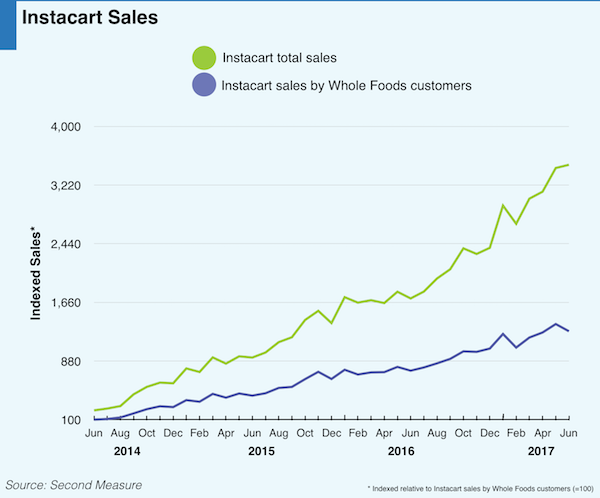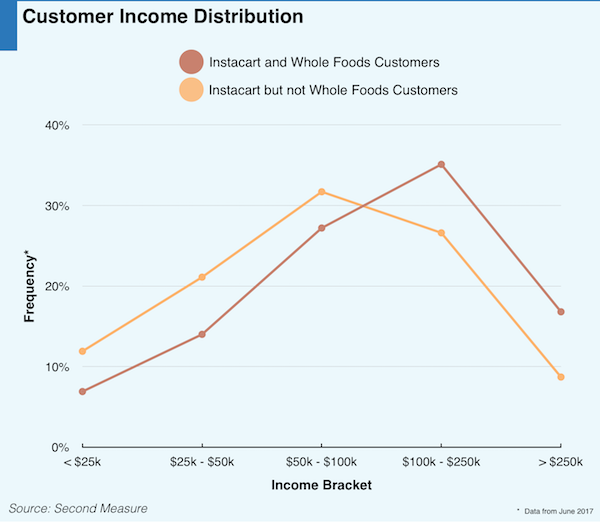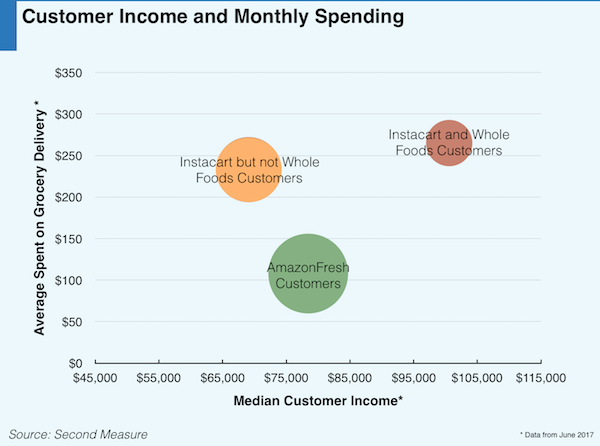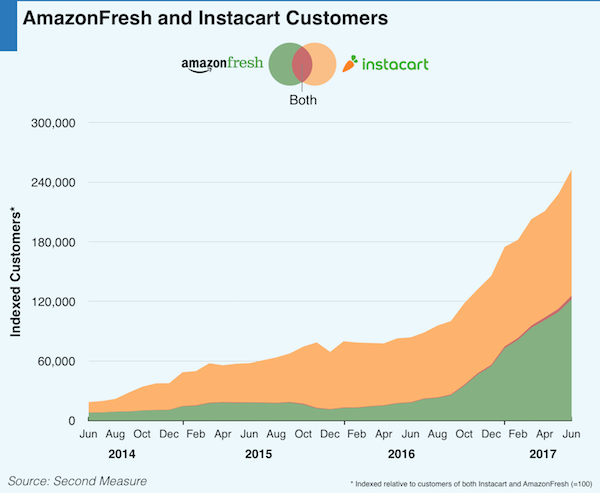NOTE: Bloomberg Second Measure launched a new and exclusive transaction dataset in July 2022. Our data continues to be broadly representative of U.S. consumers. As a result of this panel change, however, we recommend using only the latest posts in assessing metrics, and do not support referring to historical blog posts to infer period-over-period comparisons.
Online retail giant Amazon made headlines recently by announcing its planned purchase of high-end grocer Whole Foods. The market responded immediately with stock price leaps for both companies, and The New York Times speculated that the acquisition will poise Amazon to better compete with another retail behemoth, Walmart, in the brick-and-mortar marketplace. However, Amazon is known for e-commerce, so what will this sale mean for existing online grocery delivery services?
Neither Amazon nor Whole Foods are strangers to selling groceries online. Amazon runs its own grocery delivery service, AmazonFresh, while Whole Foods has a multi-year partnership with Instacart. Our data shows that this acquisition will give AmazonFresh access to an attractive segment of Instacart’s customers.
If AmazonFresh moves to entice Whole Foods shoppers, our data suggests Instacart would have cause for concern. While TechCrunch reported sales via Whole Foods represents less than 10% of Instacart’s business, we found a significant proportion of Instacart customers – 34% in June – also shop at brick-and-mortar Whole Foods. This group accounts for 37% of Instacart’s total sales.

Also included in this group are some of Instacart’s wealthiest, and likely most valuable, customers. As of June, our data shows that Instacart customers who shop at Whole Foods have a median income 46% higher than those who don’t.

Furthermore, customers of Instacart and Whole Foods have greater spending power and spend more on grocery delivery than the average AmazonFresh customer. These individuals are a desirable target for Amazon because their:
- Median income is 28% higher than AmazonFresh customers
- June monthly spending at Instacart averaged $265, more than double what the average AmazonFresh customer spent

AmazonFresh has shown it is serious about growth. Since last June, its customer base has increased nearly six-fold while Instacart’s has doubled. And both still have room to grow. Only 1 in 25 U.S. consumers (4%) have had groceries delivered from AmazonFresh, Instacart, or similar services. But shoppers in this industry are polarized; just 1.5% of customers used both AmazonFresh and Instacart in June.

If Amazon takes control of Whole Foods, loyalties could be tested for some of the most coveted customers in the grocery delivery market. To follow how Amazon’s upcoming strategic choices change this landscape, get in touch and request a demo.
